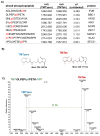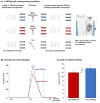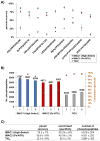An Internal Standard for Assessing Phosphopeptide Recovery from Metal Ion/Oxide Enrichment Strategies
- PMID: 29671274
- PMCID: PMC6004253
- DOI: 10.1007/s13361-018-1946-6
An Internal Standard for Assessing Phosphopeptide Recovery from Metal Ion/Oxide Enrichment Strategies
Abstract
Phosphorylation-mediated signaling pathways have major implications in cellular regulation and disease. However, proteins with roles in these pathways are frequently less abundant and phosphorylation is often sub-stoichiometric. As such, the efficient enrichment, and subsequent recovery of phosphorylated peptides, is vital. Mass spectrometry-based proteomics is a well-established approach for quantifying thousands of phosphorylation events in a single experiment. We designed a peptide internal standard-based assay directed toward sample preparation strategies for mass spectrometry analysis to understand better phosphopeptide recovery from enrichment strategies. We coupled mass-differential tandem mass tag (mTMT) reagents (specifically, TMTzero and TMTsuper-heavy), nine mass spectrometry-amenable phosphopeptides (phos9), and peak area measurements from extracted ion chromatograms to determine phosphopeptide recovery. We showcase this mTMT/phos9 recovery assay by evaluating three phosphopeptide enrichment workflows. Our assay provides data on the recovery of phosphopeptides, which complement other metrics, namely the number of identified phosphopeptides and enrichment specificity. Our mTMT/phos9 assay is applicable to any enrichment protocol in a typical experimental workflow irrespective of sample origin or labeling strategy. Graphical Abstract ᅟ.
Keywords: Lumos; Phosphorylation; TMT super-heavy; TMT0; TMTsh; TMTzero; mTRAQ.
Conflict of interest statement
The authors acknowledge no competing interests.
Figures



References
MeSH terms
Substances
Grants and funding
LinkOut - more resources
Full Text Sources
Other Literature Sources
Molecular Biology Databases
Research Materials

